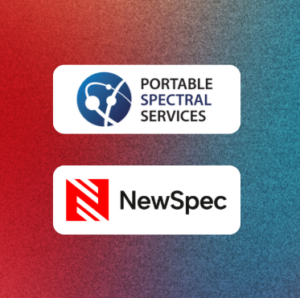
A Bright Future Ahead
Portable Spectral Services Announces Exciting Management Transition
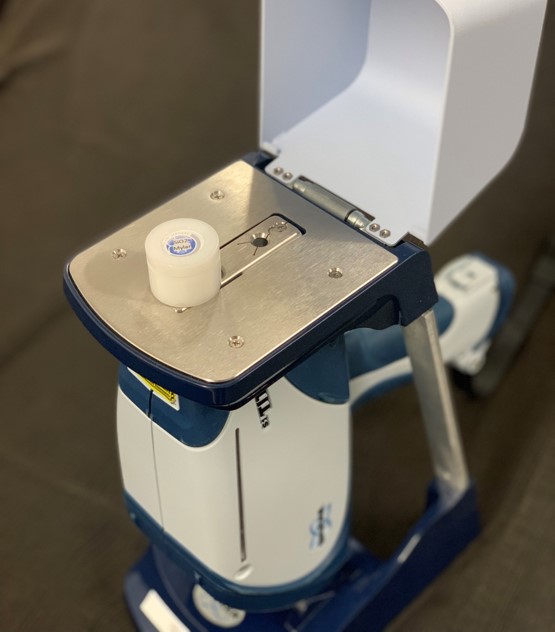
Certified Reference Material (CRM), also referred to as a standard, is an essential part of the daily use of portable XRF instruments. They enable us to evaluate the functionality and accuracy of our instrument readings and provides confidence in the quality of the obtained measured results.
Two important aspects of a CRM are that it must be (1) homogenous and (2) chemically stable. These attributes enable the certified values of the CRM to be accurately duplicated and can be used for quality control and quality assurance across short and long time periods.
The certified values for various elements in a CRM are determined by a round-robin laboratory analysis method. This involves each CRM being sent to several laboratories, usually more than 15, for analysis using various methods (XRF, 4-Acid Digest and Aqua Regia) to obtain well-constrained values for the composition of the material, with a 95% confidence interval and low standard deviations.
A report based on the CAMIRO project recommends that portable XRF users establish a suite of at least 5 CRMs to match their sample type and matrix (silica, carbonate, iron-rich etc) in order to determine which mode (e.g. Soil or Mining) is best for each element. This will also help to determine the concentration ranges you can expect your instrument to measure effectively for your elements of interest. It is worth pointing out that ALL instruments have a different bias. It is important to understand this bias and calculate expected element values across a range of CRMs for each instrument. This gives the user greater confidence in their results and allows the application of a simple linear correction to the data to match the certified results. Figure 1 gives an example of two
CRMs measured by two different instruments.

Figure 1: The analysis of two CRMs (gold and purple) measured by two different instruments, showing that the instrument has a significant impact on the quantitative data.
1. Performance and proficiency testing
The most important aspect of a CRM is that it has a certificate that states the composition of the material and the uncertainties associated with these values. Therefore, CRMs can be used to assess instrument bias and plot the instrument’s performance, be it over the period of a day, or even months into a project (Fig. 2). When checking the performance and proficiency of an instrument it is effective to use a selection of CRMs with different concentrations across the light to heavy elements that cover the project parameters. Ongoing assessment of results will also pick up on drift. It is recommended that if there is a drift of greater than 10% from the original results, the instrument should be recalibrated.

Figure 2: Analysis of uranium CRM during a project, to provide real-time QAQC.
2. Process control and quality assurance checks
The replicability and chemical stability of CRMs enable them to be used for QAQC throughout a project. It is recommended that you use a CRM blank as a reference check approximately every 1 in 20 to 30 samples. This will allow you to monitor low level contamination.
Having CRMs of known values analysed with the collection of samples of unknown values enables quality assurance and control processes to be applied to the data. When comparing the measured values for a CRM to the concentration on the certificate, the measured value should consistently be within a specific range of the certificate (Fig. 2). If there is an unexpected spike or drop in the measured CRM composition and the value is no longer within an acceptable range from the certificate value, then there is a quality control problem. This could be due to contamination of the instrument or the calibration is no longer performing correctly. The quick identification and resolution of this error means the quality of the data is continuously checked and assured. Implementing a procedure that includes the use of CRM as part of regular QAQC will ensure the collection of good data.
What CRMs should you use?
Measurement of elemental concentration with pXRF is subject to sample matrix effects due to the interaction of x-rays with minerals and elements within the sample. For this reason, when selecting CRMs to use you should choose an appropriate matrix. For example, if you are measuring soils to look for a nickel sulphides use a soil CRM to assess the elements that are important to that project NOT a nickel sulphide CRM.
If you would like assistance in identifying or purchasing CRMs appropriate for your project, contact us at [email protected]
3. Creating calibrations
CRMs are also used in the creation of custom calibrations, as the well-constrained element values of the CRMs enable them to be a good source of high-quality chemical data that is reliable. These calibrations are created to aid better data collection and accuracy for specific elements or matrices that are particularly challenging for currently available calibrations.
If you would like more information on how custom calibrations are created, click here.

Portable Spectral Services Announces Exciting Management Transition
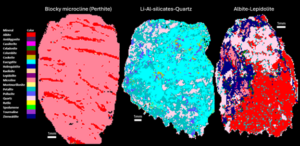
Our tool introduces uXRF (micro-X-ray fluorescence) scanning technology to RC chip analysis, enabling rapid, non-destructive, and quantitative analysis of major, minor, and trace mineral phases.
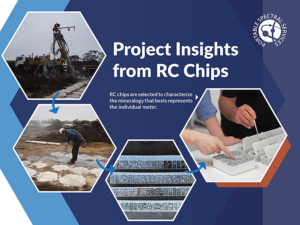
Automated micro-X-ray fluorescence (micro XRF) technology emerges as a powerful tool to rapidly and accurately capture the mineralogy of rock chip, RC and AC samples.

Findings of an ongoing regional evaluation study over concealed Proterozoic lithologies known to host magmatic nickel sulphides with potential to host other base-metal, gold and rare earth elements (“REE”) systems within the Fraser Range, Western Australia.
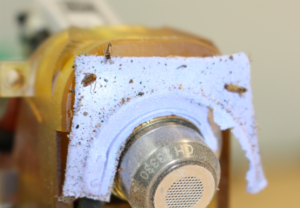
Findings of an ongoing regional evaluation study over concealed Proterozoic lithologies known to host magmatic nickel sulphides with potential to host other base-metal, gold and rare earth elements (“REE”) systems within the Fraser Range, Western Australia.
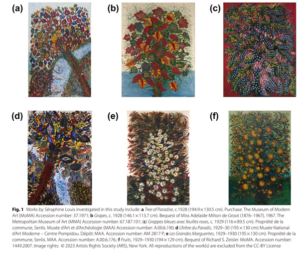
Findings of an ongoing regional evaluation study over concealed Proterozoic lithologies known to host magmatic nickel sulphides with potential to host other base-metal, gold and rare earth elements (“REE”) systems within the Fraser Range, Western Australia.
